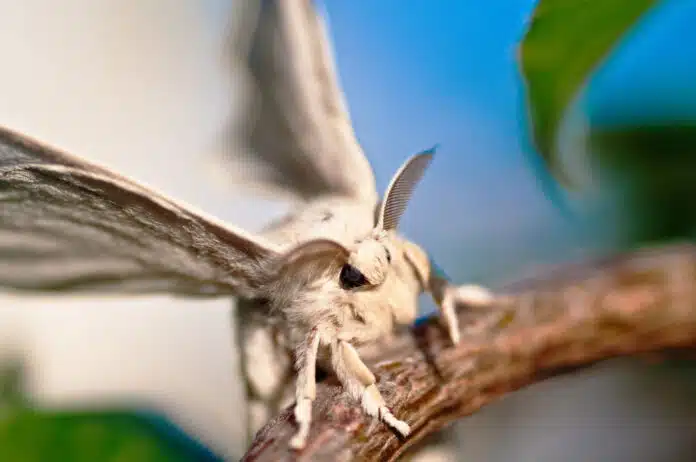
By Ashwini Sakharkar 15 Oct, 2024
Collected at: https://www.techexplorist.com/silkworm-moths-odor-detection-improve-technologies-robotics/91139/
The silkworm moth (Bombyx mori) is a fascinating insect that has undergone significant changes due to domestication. Despite no longer being able to fly, these moths have developed a remarkable ability to detect pheromones, making them ideal for studying odor source localization. Even though they cannot fly, the male moths exhibit a behavior known as fanning, where they flap their wings upon detecting pheromones. This raises an intriguing question about the quantitative impact of wing flapping on odor detection.
To shed light on this question, Dr. Toshiyuki Nakata and a team of scientists from the Graduate School of Engineering at Chiba University delved into the world of B. mori to uncover the secrets behind their pheromone detection abilities.
“We understand that silkworm moths detect pheromones by flapping their wings to induce airflows around them. However, the precise impact of this wing flapping on the moths’ ability to localize the odor source is unclear,” explains Nakata while elaborating on the rationale for conducting this study.
The team is comprised of talented researchers, including co-first author Daigo Terutsuki from the Faculty of Textile Science and Technology, Shinshu University, and Chihiro Fukui from the Graduate School of Science & Engineering, Chiba University.
Their study utilized high-speed photogrammetry to delve deep into the aerodynamic consequences of wing motions of B. mori. Their meticulous approach involved recording and analyzing the intricate wing movements during fanning, leading to the creation of a detailed computational model of the insects and surrounding airflow.
The simulated data enabled them to calculate the motion of particles resembling pheromone molecules around the fanning silkworm moth. This research presents a compelling new perspective on the behavior of these fascinating creatures.

One fascinating discovery from the study reveals that B. mori selectively samples the pheromone from the front, employing a unique scanning technique while rotating its body to pinpoint the source. This directional sampling of pheromone molecules not only aids in locating odor sources but also provides valuable insights for potential applications beyond the realm of insects.
The implications of this research stretch far beyond the study of insects. The knowledge gained from B. mori’s airflow manipulation could pave the way for groundbreaking advancements in robotic odor source localization technologies. Dr. Daigo Terutsuki and his team are at the forefront of this innovative development, working on equipping drones with insect antennae for odor detection. The potential applications of this technology range from locating individuals in emergencies to enhancing environmental monitoring and surveillance.
“The findings from this study highlight the importance of creating directional airflow when searching for odor sources using flying robots. This involves carefully adjusting the drone’s orientation and the configuration of its propellers and odor sensors to optimize detection capabilities,” notes Dr. Nakata.
Furthermore, the study emphasizes the critical importance of future research in considering environmental factors such as airflow turbulence and antenna structure, which play a significant role in influencing odor detection.
“Currently, robots rely heavily on vision and auditory sensors for navigation. However, as demonstrated by disaster rescue dogs, utilizing the sense of smell can be highly effective for locating humans. While the application of sensing smell in robots is still in its early stages, this research could help in developing robots that efficiently search for odor sources in disaster situations,” says Dr. Nakata optimistically.
In conclusion, this study not only advances our understanding of insects’ odor-detecting strategies but also offers compelling design principles for the development of the next generation of aerial odor-detecting robots.
Journal reference:
- Toshiyuki Nakata, Daigo Terutsuki, Chihiro Fukui, Tomoya Uchida, Kohei Kanzaki, Taito Koeda, Sakito Koizumi, Yuta Murayama, Ryohei Kanzaki & Hao Liu. Olfactory sampling volume for pheromone capture by wing fanning of silkworm moth: a simulation-based study. Scientific Reports, 2024; DOI: 10.1038/s41598-024-67966-y

Leave a Reply